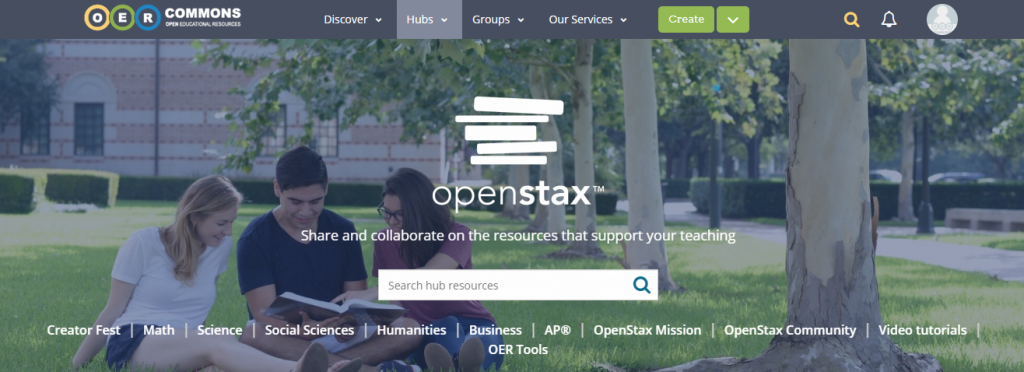

This guide focuses on open textbook adoption, but it is important to understand the breadth of OER available that can be used to complement or replace a complete book.
Some common types of resources you might use are:
You can find content with an open license or in the public domain in many different places. Open resources to consider for your course are largely grouped by format. Open textbooks have a library, open images live in image databases, open videos are on video sites, and so on.
Here are recommended places to search for OER:
Like commercial textbooks, some open textbooks have ancillary materials. These may come from directly the book's author and/or publisher, or be developed by other another entity.

OpenStax Resources on OER Commons.
OPENSTAX HUB: OpenStax teamed up with OER Commons to create this venue for instructors to share ancillary materials that they have created to pair with OpenStax textbooks. In addition to the OER Commons’ OpenStax hub, instructors can also access ancillary content for OpenStax texts through the Instructor Resources tab on any OpenStax textbook. To use the instructor resources provided by OpenStax, you will need to verify your identity to ensure that students cannot get easy access to homework or review answers.
PHET INTERACTIVE SIMULATIONS (PHETSIMS): PhET provides free, interactive, research-based science and mathematics simulations. These simulations cover topics taught in K-12 and higher education contexts, with primary coverage for Physics, Biology, Mathematics, Chemistry, and Earth Science.
MYOPENMATH: “A free, open source, online course management system for mathematics and other quantitative fields,” is an exceptional example of a tool for sharing open ancillary materials. The site does require a login to ensure that only instructors can access the answers to exercises, but otherwise, its content is open and free to access.
LIBRETEXTS: This site contains resources for thirteen subject areas and its content has been adopted for more than 150 courses. Each subject area in LibreTexts contains a mix of content such as texts, homework exercises, interactive applications, visualizations and simulations, laboratory experiments, and worksheets. Although the resource still leans toward the physical sciences, it also carries materials for mathematics and statistics.
Here are some examples of commercial products to complement OER resources.
For a deeper dive:
Creative Commons. (n.d.) Education / OER Resources.
Elder, A. (2017). How to Find and Evaluate OER [Video].
Gong, R. (2019). OER by Discipline.
West, Quill. (n.d.). Searching for Open Materials.